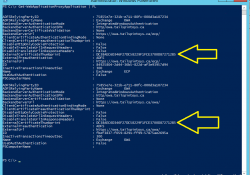Update WAP Published Application Certificate
A base Web Application Proxy (WAP) provides AD FS proxy capability in addition to also publishing on-premises web applications to the Internet. This can be used to publish services such as Exchange OWA and Autodiscover.
Publish Applications using AD FS Preauthentication can used in certain situations to pre-authenticate the incoming request before it is passed onto the internal server. Alternative… Read the rest “Update WAP Published Application Certificate”

